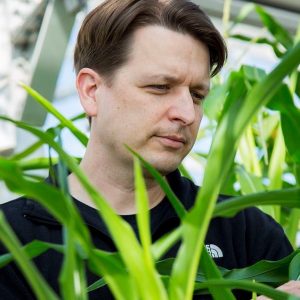Professor, Department of Biology
The University of New Mexico
Dr. Hanson has disclosed four inventions, and has a pending U.S. patent application for his microorganism encapsulation technology.
Nature has countless examples of symbiotic organisms and even microorganism communities where the function of the whole outperforms the sum of the parts. Cell encapsulation or immobilization is a way to achieve these performance gains by design. Encapsulation matrices are designed to be rigid and chemically inert once formed. Encapsulated cells are supplied with nutrients and their extracellular products are collected through a network of channels that connect the spaces among the cells. The channel network extends the life of the cells since it cuts down on competition for space and, if the media is continually replaced, competition for resources. Currently, most cultures are not encapsulated. One current method for immobilizing cells uses alginate beads. However, microorganisms continue to grow and migrate within the alginate, and in many other immobilization systems, changing the community composition over time and causing undesirable results. There is a present need for an encapsulation method that maintains the species composition and spatial location for the life of the culture.
Dr. Hanson’s encapsulation technology is a method for encapsulating whole, live cells within stable, engineered microorganism communities. The encapsulation limits certain cell growth (such as cell division) while maintaining biological function. The cells are sustained with nutrients and can capture light for photosynthesis. The community of microorganisms can be maintained for long periods of time. If the stable community then releases a compound of interest into the surrounding media, the compound can be harvested continually for as long as the biological function of the community is maintained. The technology is able to maintain cells at peak metabolic rates and extract compounds without an expensive and wasteful harvesting phase.
Dr. Hanson and his co-inventors have created as an initial prototype, several algae, cyanobacteria, and bacteria-in-liquid cultures and have been testing encapsulation methods to maximize yield. The inventors have also developed a prototype gas-exchange chamber combined with variable fluorescence monitors, hyperspectral imaging, and a supercritical fluid chromatography system for measuring physiological function. The bioproducts produced by the encapsulation technology, such as pharmaceuticals, amino acids, and electricity, have applications for the biofuel, biochemical and biomedical industries.
Dr. Hanson’s research focuses mainly on physiological, ecological, and energy-related aspects of photosynthesis in plants and algae, particularly elements of the carbon reactions. He currently has funding from five major research grants: three from NSF on CO2 and water diffusion through leaves to improve models of photosynthetic responses to the environment, adaptive evolution of Sphagnum moss, and algal bioenergy; one from ARPAe applying microneedles and micro-GCs to understand plant function in the field, and one from NASA for research on photosynthesis and lignification of plants growing on the International Space Station.
PENDING U. S. PATENT APPLICATION (UNM-AFFILIATED)
Engineered Stable Microorganism/Cell Communities


